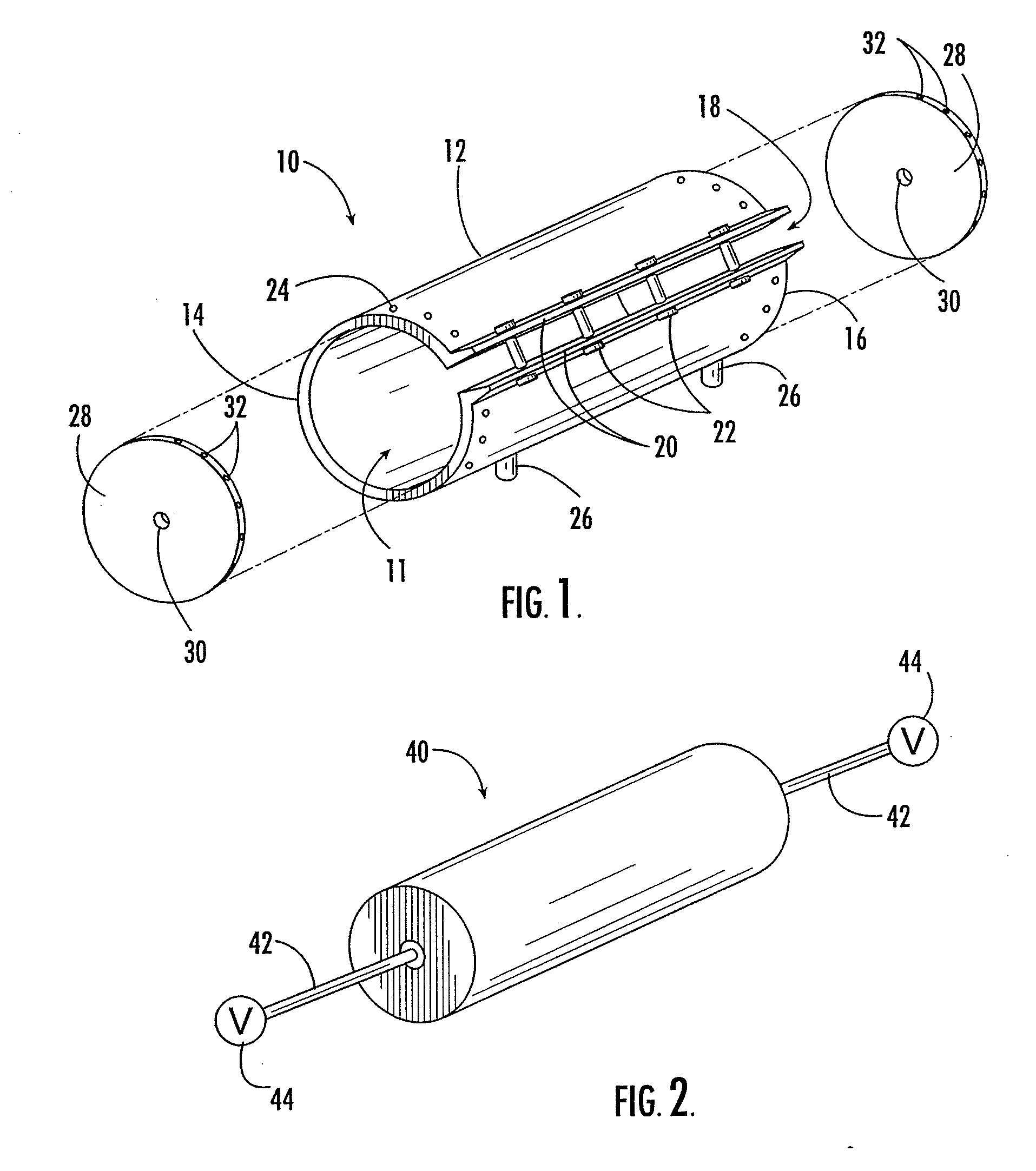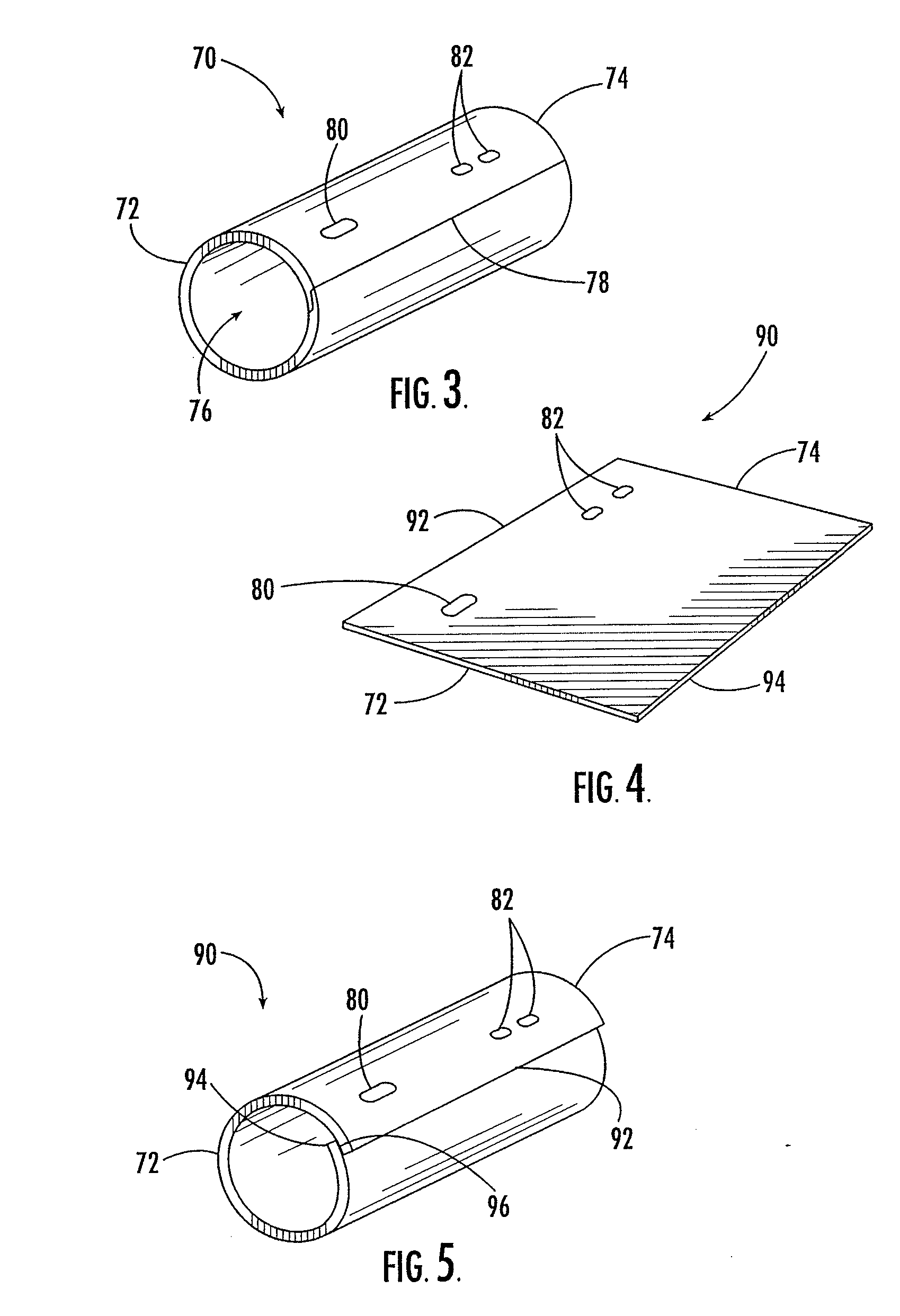Consolidation Joining of Thermoplastic Laminate Ducts
a technology of thermoplastic laminate and ducts, which is applied in the field of thermoplastic duct formation, can solve the problems of plaster that is typically removed or destroyed as waste, complex manufacturing process, and long manufacturing process of such reinforced thermoset ducts, and achieves good flammability, smoke and toxicity tests.
- Summary
- Abstract
- Description
- Claims
- Application Information
AI Technical Summary
Benefits of technology
Problems solved by technology
Method used
Image
Examples
Embodiment Construction
[0032] The present invention now will be described more fully hereinafter with reference to the accompanying drawings, in which preferred embodiments of the invention are shown. This invention may, however, be embodied in many different forms and should not be construed as limited to the embodiments set forth herein; rather, these embodiments are provided so that this disclosure will be thorough and complete, and will fully convey the scope of the invention to those skilled in the art. Like numbers refer to like elements throughout.
[0033] Referring now to FIG. 1, there is shown a consolidation joiner 10 for forming consolidation joints in thermoplastic members according to one embodiment of the present invention. The consolidation joiner 10 includes an outer support structure comprised of a tube or elongate cylinder 12 that extends longitudinally from a first end 14 to a second end 16 and defines a continuous cavity 11 therethrough. In this embodiment, the elongate cylinder 12 defi...
PUM
| Property | Measurement | Unit |
|---|---|---|
| pressure | aaaaa | aaaaa |
| diameter | aaaaa | aaaaa |
| diameter | aaaaa | aaaaa |
Abstract
Description
Claims
Application Information
 Login to View More
Login to View More - R&D
- Intellectual Property
- Life Sciences
- Materials
- Tech Scout
- Unparalleled Data Quality
- Higher Quality Content
- 60% Fewer Hallucinations
Browse by: Latest US Patents, China's latest patents, Technical Efficacy Thesaurus, Application Domain, Technology Topic, Popular Technical Reports.
© 2025 PatSnap. All rights reserved.Legal|Privacy policy|Modern Slavery Act Transparency Statement|Sitemap|About US| Contact US: help@patsnap.com



